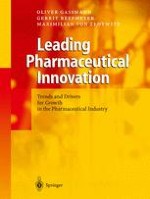Pharmaceutical innovation is like gambling at roulette, only the stakes are higher. Considerably higher, since the most recent estimates put the costs of drug development at US$ 800 million to US$ 1 billion - per drug! This is equivalent to the price tag of the Empire State Building, when it was for sale a few years ago. In 2001, the major US and European pharmaceutical companies invested more than US$ 30 billion in R&D, at a higher R&D to-sales ratio than virtually any other industry, including chemicals, auto mobiles, electronics, aerospace, and computers. Delivering a blockbuster drug is the Holy Grail for any pharmaceutical company. But in the last decade the rules of developing blockbusters seem to have changed. On the one hand, more sophisticated screening technolo gies, genetic engineering, and expanding networks with biotechnology companies increase the probability of commercial success. Critical success factors include the discovery phase and a stronger outside-in orientation in the early innovation phase. After the implosion of the high-tech stock mar ket, biotechnology and other technology-driven opportunities may have lost some of their attractiveness for big pharma: a pipeline of solid and predictable innovations seems to be the highest goal of most pharmaceuti cal companies again. On the other hand, despite significant investments in pipeline management and novel technologies, there is still no recipe for ensuring a blockbuster hit.
